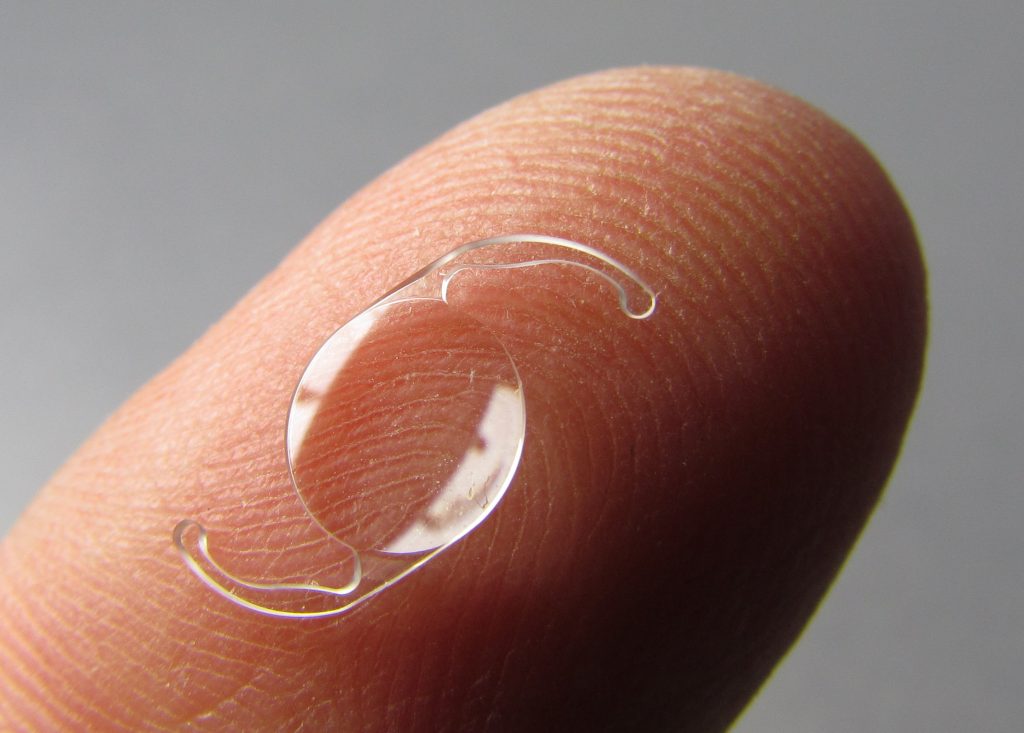Multifocal lens implants are a relatively new development, replacing single focus lens implants. Single focus lens implants require patients to still use corrective glasses when reading or driving, while multifocal lens implants allow for distance and near focusing at one specific distance at the same time. Some lenses provide near (reading) and distance vision while others provide intermediate (computer distance) and distance vision. Many patients find that multifocal lenses add greatly to their quality of life and they enjoy the convenience of not having to keep up with reading glasses.
Multifocal lens implants feature a patented design that distributes light to distance evenly within the eye, allowing us to see better at various focal points.
In order for these lenses to work well, patients must have relatively healthy eyes. Those with severe dry eye, macular degeneration, or advanced glaucoma are not good candidates. A patient also must not have much astigmatism in order for these lenses to work well. Patients with larger amounts of astigmatism would likely benefit more from an astigmatism-correcting intraocular lens, such as a toric lens, or more advanced multifocal lenses, such as Extended Depth of Focus (EDOF) lenses.







